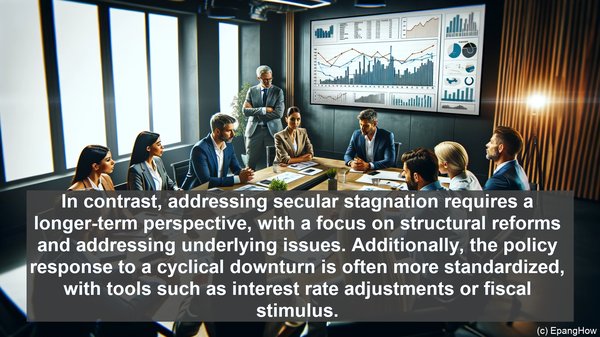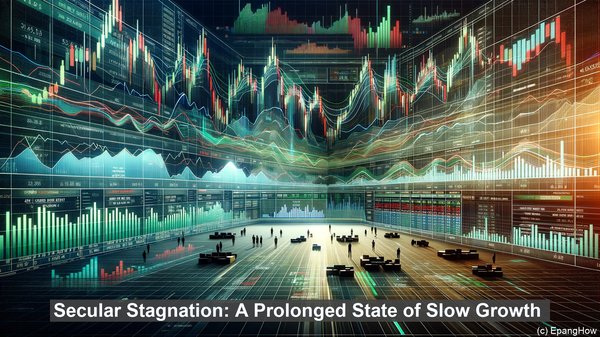Introduction: Navigating Economic Turbulence
Hello everyone, and welcome to today’s discussion. The world of economics is a dynamic landscape, with its fair share of ups and downs. Today, we’ll be exploring two phenomena that often arise during periods of economic uncertainty: secular stagnation and cyclical downturn. While they may seem similar at first glance, they have underlying factors that set them apart.

Cyclical Downturn: The Ebb and Flow of the Business Cycle
Cyclical downturns are a natural part of the business cycle. They occur periodically, often in response to shifts in demand, market conditions, or external shocks. These downturns are characterized by a decline in economic activity, including reduced production, lower consumer spending, and increased unemployment. Governments and central banks often respond with measures such as fiscal stimulus or monetary easing to mitigate the impact and stimulate recovery. Cyclical downturns are often seen as temporary, with the economy eventually rebounding as the cycle progresses.
Secular Stagnation: A Prolonged State of Slow Growth
Secular stagnation, on the other hand, refers to a more persistent and prolonged period of slow economic growth. Unlike cyclical downturns, which are part of the natural ebb and flow, secular stagnation can last for years or even decades. It is often caused by structural factors such as demographic changes, technological shifts, or a lack of productive investment. Secular stagnation presents unique challenges, as traditional policy tools may be less effective in stimulating growth. It requires deeper structural reforms, such as improving education and skills, fostering innovation, or addressing inequality.
Implications and Policy Considerations
The distinction between secular stagnation and cyclical downturn has significant implications for policymakers. During a cyclical downturn, the focus is often on short-term measures to stabilize the economy and restore confidence. In contrast, addressing secular stagnation requires a longer-term perspective, with a focus on structural reforms and addressing underlying issues. Additionally, the policy response to a cyclical downturn is often more standardized, with tools such as interest rate adjustments or fiscal stimulus. However, with secular stagnation, a more tailored and multifaceted approach is needed, considering the specific factors at play.

